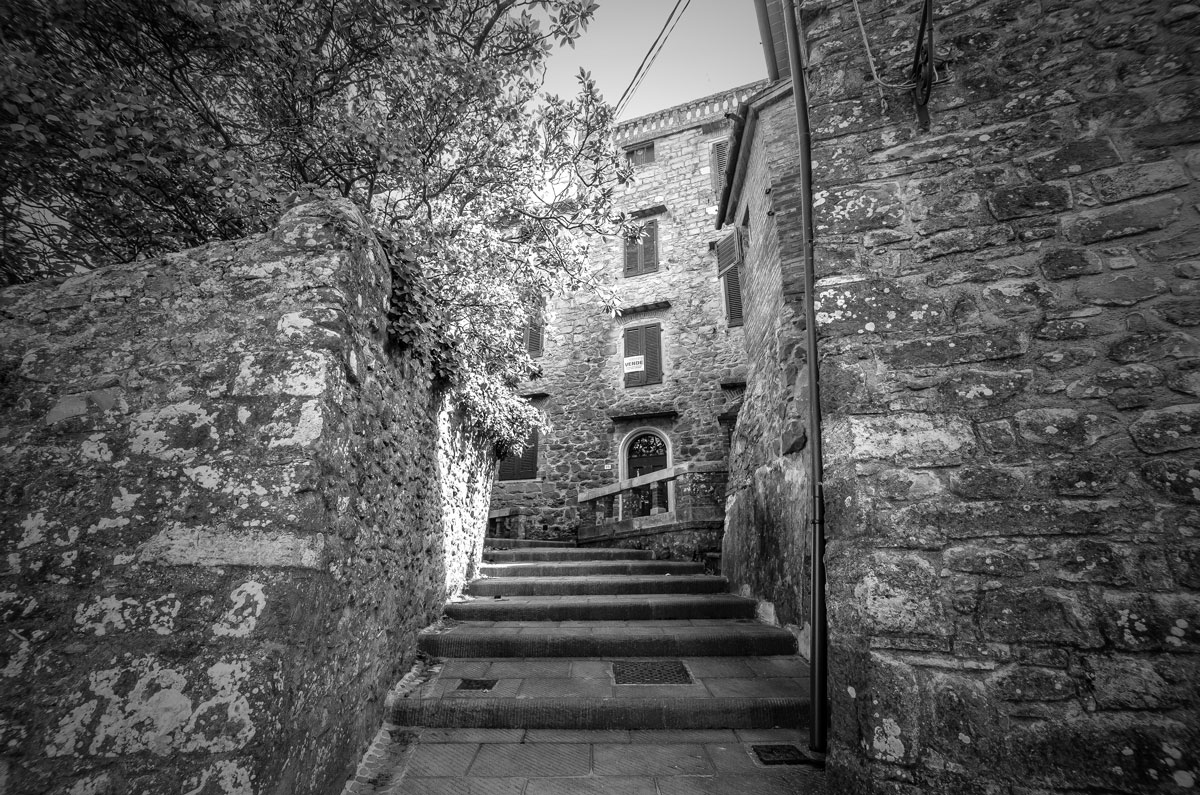Discover Montecatini Alto: Tuscany’s Hidden Hilltop Gem
The unassuming little train station of Montecatini Terme, isn’t the best introduction to the town, but it’s easy to reach from Florence and much of Tuscany, and it’s here, perched close to the town centre of Montecatini Terme and the various spas where you’ll find charming Montecatini Alto, atop a hill overlooking Tuscany’s spa capital.
Further reading: we included the charming Montecatini Funicular in our list of the best under-the-radar things to see in Tuscany.
Getting To Montecatini Alto
The most direct and pleasingly scenic way to reach Montecatini Alto is via the historic funicular, operating since 1897, when it was originally steam-operated. The charming red trains, fully electric since the 1920’s, complete the steep ascent from Montecatini Terme in just ten minutes, offering breathtaking views of the surrounding countryside as they slowly chug through the trees. The funicular runs regularly from March to October, and tickets can be purchased at the station. The station is particularly pleasant, a relic of the 1800s, perfect kept as a portal to another era.
For drivers, there is parking available near the village. Adventurous visitors can opt for the hike up, though steep, the path rewards with stunning scenery along the way.


Aboard the funicular, riding above the hill, you can see just how out of the way this little village is, with vast sweeping vistas of the Tuscan countryside and Montecatini Terme below.

Exploring Montecatini Alto
Travellers to Montecatini Terme tend to partake of the rejuvenating spa waters from below, and then begin their ascents into the historic Alto a short while later, arriving in time for lunch. So if you want to explore with some relative quiet, arrive in the morning.
Montecatini Alto’s delightful old town is best explored on foot, with a slow pace allowing visitors to take in its medieval charm. At the heart of Montecatini Alto lies Piazza Giusti, a lively square, busy with restaurants and cafés. It’s a good spot to stop for lunch and a coffee while soaking up the atmosphere. There are a couple of buildings of interest in the piazza: the theatre and an ancient looking chapel with ornate arched ceilings.


Afterwards, the 11th century Church of San Pietro is a must-see. Inside, there are various artworks, including a stone crucifix from the late 14th century and paintings by various artists. The atmosphere is decidedly cold, with its medieval walls still intact, keeping the harsh Tuscan sun at bay for near a thousand years.
Outside the church there are medieval battlements with evidence of ancient battles in the marring on the stones. There’s also a somewhat odd monument in dedication to the Patron Saint of Montecatini Terme: Saint Barbara, who is, amongst other things, the Patron Saint of explosives, and so with stoic commitment to her cause, the monument is a collection of large guns, bullets, fire fighting equipment and other equally surprising elements, all meant to show appreciation of the institutions that fall under Saint Barbara’s protection – the Military, Fire Brigade, Navy, etc.


The Clock Tower (Torre dell’Orologio) stands as a stunning reminder of the Montecatini Alto’s medieval past. The Torre del Carmine o dell’Orologio (tower of the clock) is 1 of 6 still standing from what was once a grand 25, a fortunate survivor of the troops of the Grand Duke Cosimo de Medici, who besieged the town in 1554.
The tower looks out over the plains and countryside that connects the two Montecatini’s. The clock was constructed sometime in the 1500’s, though it was reconstructed a hundred or so years later and then modernised in the 1700s’s with external hands. The marble dial and roman numerals came later in 1844. The bell hidden within the clocktower lasted quite some time until it was replaced in 1843 with a new one which would strike every sixth hour.
Close to the tower is an entrance to a photography exhibition, showing Montecatini through the ages with original photographs dating to the 1800’s. Nothing has changed. Even the views, looking over the bucolic countryside have seen little change since the Grand Duke of Tuscany, Pietro Leopoldo had the marsh lands cleaned and reclaimed for use as spas in the 1700’s.
But speaking of views. The best views are arguably at the Rocca di Montecatini, a ruined fortress on the northern hill. The remains offer a glimpse into the village’s past defensive structures but are most frequented for their spectacular vistas over Tuscany’s iconic hills.


Where to Stay in Montecatini Alto
There are no hotels in Montecatini Alto, but there are a growing number in Montecatini Terme, which, combined with Alto, is a fabulous under the radar Tuscan town for a weekend of exploration and rejuvenation.
For a highly rated, modern five-star hotel in the middle of Montecatini Terme, try LHP Hotel Montecatini Palace & SPA and for something a little more traditional, book a room at the stunning Ercolini e Savi, that fuses Tuscan elegance to fabulous cuisine and beautiful Montecatini views… and it’s just a short walk to the Montecatini Alto funicular.
If you found this review helpful, please consider booking your hotels with this link, from which we may earn a small commission.
